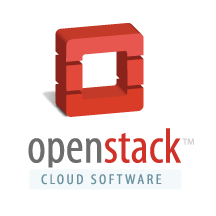Roughly six months after the
launch
of its “Folsom” release last fall, OpenStack on Thursday unveiled
version 2013.1 “Grizzly,” the seventh and latest release of the open
source software for building public, private and hybrid clouds.

More than 500 contributors made 7,620 updates in the OpenStack "Grizzly" release.
More
than 500 contributors made 7,620 updates in this new release, which,
“more than any before it, was driven by users who have been running
OpenStack in production for the past year (or more) and have asked for
broader support for the compute, storage and networking technologies
they trust and even greater scale and ease of operations,” explained
Mark Collier, chief operating officer at the OpenStack Foundation, in a
blog post announcing the new software.
Best Buy, Bloomberg, NSA, Cisco WebEx, Comcast, CERN, HP, NeCTAR,
PayPal, Rackspace and Samsung are among the companies using OpenStack in
production.
Developers who contributed to this release came from more than 45
companies, including Red Hat, Rackspace, IBM, HP, Nebula, Intel,
eNovance,
Canonical, VMware, Cloudscaling, DreamHost and SINA.
'Support for Security Groups'
Seven integrated projects make up OpenStack, each with source code now publicly available:
Compute ("Nova"),
Object Storage ("Swift"),
Image Service ("Glance"),
Networking ("Quantum"),
Block Storage ("Cinder"),
Identity ("Keystone") and
Dashboard ("Horizon").
More than 200 new features are included in this Grizzly release, and
some 1,900 bugs were fixed. In anticipation of the launch, Linux.com
spoke earlier this week with Thierry Carrez, release manager for the
project, to hear about some of the highlights.
“Personally, my favorite key features for this release would be in
OpenStack Compute (Nova): introduction of the 'Cells' deployment model
for massive scale, and isolation of the compute nodes from the rest of
the system for better security ('no-db-compute'),” Carrez began. “I also
like how OpenStack Networking introduced support for security groups,
as well as a load-balancing-as-a-service feature.”
Meanwhile, “I would also mention how OpenStack Block Storage (Cinder)
managed to add a large number of storage drivers from all of the
storage industry,” he told Linux.com. Ten new drivers were added, in
fact, including Ceph/RBD, Coraid, EMC, Hewlett-Packard, Huawei, IBM,
NetApp, Red Hat/Gluster, SolidFire and Zadara.
Finally, “the general drive towards more reuse of code across the
various OpenStack projects (through the introduction of the common
'Oslo' libraries) is also worth mentioning,” Carrez said.
Cross-Origin Resource Sharing
Other highlights of the new release include significant improvements
in virtualization management on the Compute side, with full support for
ESX, KVM, XEN and Hyper-V. Quotas were added to the Object Storage
system, meanwhile, as was cross-origin resource sharing (CORS), enabling
browsers to “talk directly to back-end storage environments,” Collier
noted.
For Networking, Grizzly aims to achieve greater scale and higher
availability by distributing L3/L4 and dynamic host configuration
protocol (DHCP) services across multiple servers. New plug-ins were also
added from Big Switch, Hyper-V, PlumGrid, Brocade and Midonet.
The Grizzly Dashboard, meanwhile, is backwards-compatible with the Folsom release.










